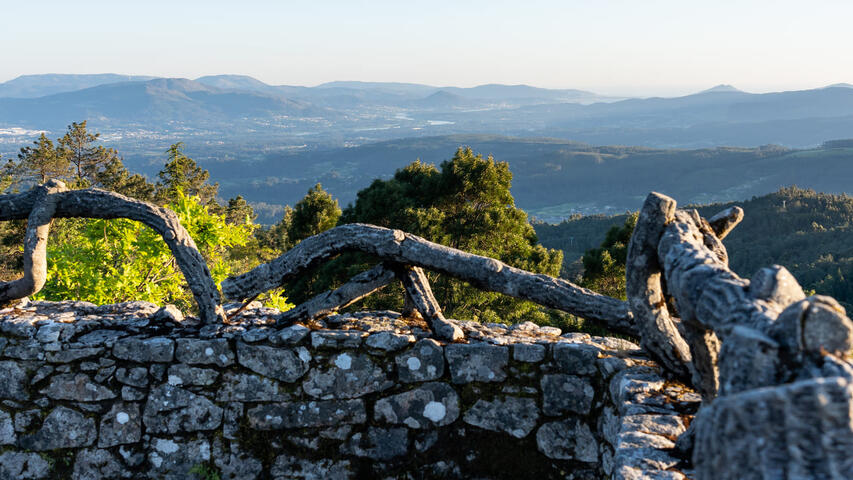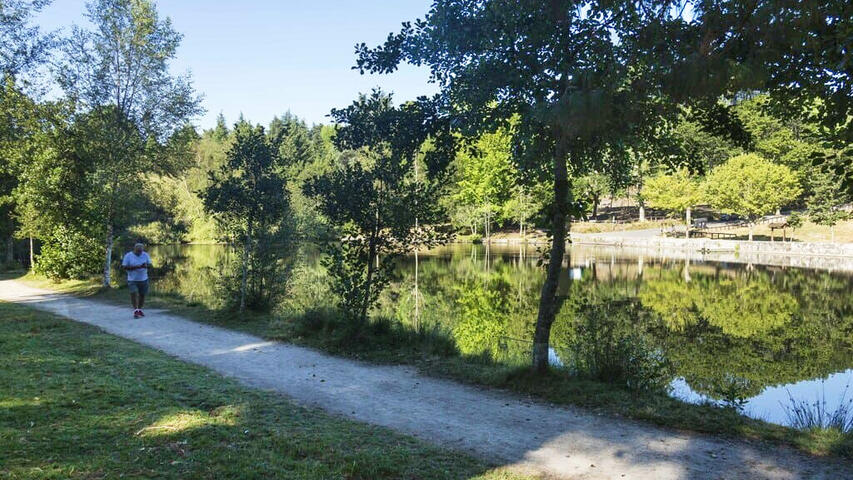Magical forests and woodlands
Lush forests with centuries-old chestnut trees, places where land meets water and exceptional natural viewpoints provide a natural spectacle for visitors.
To go into the nature of the province of Pontevedra is to discover parks and forests that share calm and fresh air with all those who walk through them. They reach their splendour in autumn, when the leaves take on ochre tones, deciduous leaves, chestnuts and mushrooms, but all year round they allow you to disconnect from your routine and breathe fresh air.
One of the most renowned autochthonous forests is the Fraga de Catasós (Lalín), a vast expanse of oak and chestnut trees up to 30 metres high, considered the highest in Europe. Churches, mills and crossroads dot this centuries-old lung.

On the O Morrazo peninsula, the Cotorredondo-Castiñeiras natural area is a beautiful spot with a small lake where land and water embrace and where chestnut trees and other species coexist.
Some of the centenary chestnut trees in the Catasós forest reach 30 metres and are considered to be the tallest in Europe.
The views of the three estuaries ( Vigo, Pontevedra and Arousa) from the nearby Cotorredondo viewpoint are breathtaking. In As Rías Baixas it is possible to reconnect with nature without leaving the city.
Ponte Caldelas, near the city of Pontevedra, is home to lush forests of oak, chestnut and birch trees on the banks of the river Verdugo. To immerse yourself in them, it is ideal to follow the blue trail from the river beach of A Calzada. Further south, on the outskirts of Vigo, the Monte Alba-Cepudo Forest Park offers beautiful views of the city.
The route through the O Galiñeiro mountain range passes through pines and oaks. This mountain range, with a 700-metre peak that becomes an excellent viewpoint over the Vigo estuary, extends to the Monte Aloia Nature Reserve, in Tui. From this vantage point, which enjoys extraordinary views of the Miño river, there are several routes among the cork oaks, holly and oak trees of the Ermita carballeira. TheA Groba mountain range, further south, offers splendid landscapes adorned with interesting rock engravings.
The roots of Los pazos de Ulloa
Fraga de Catasós was owned by the Quiroga de Catasós family, who lived in the pazo of Quintela, also known as Casa de Quiroga. In the 19th century, the illustrious writer Emilia Pardo Bazán spent long periods of time in this beautiful place where the centenary chestnut trees seem to reach the sky. This spot was an inspiration for the author, from where she wrote several chapters of the literary classic Los pazos de Ulloa.
You can't miss it...
- Fraga de Catasós
- Cotorredondo-Castiñeiras Natural Park
- Blue trail of Ponte Caldelas
- Mount Aloia


